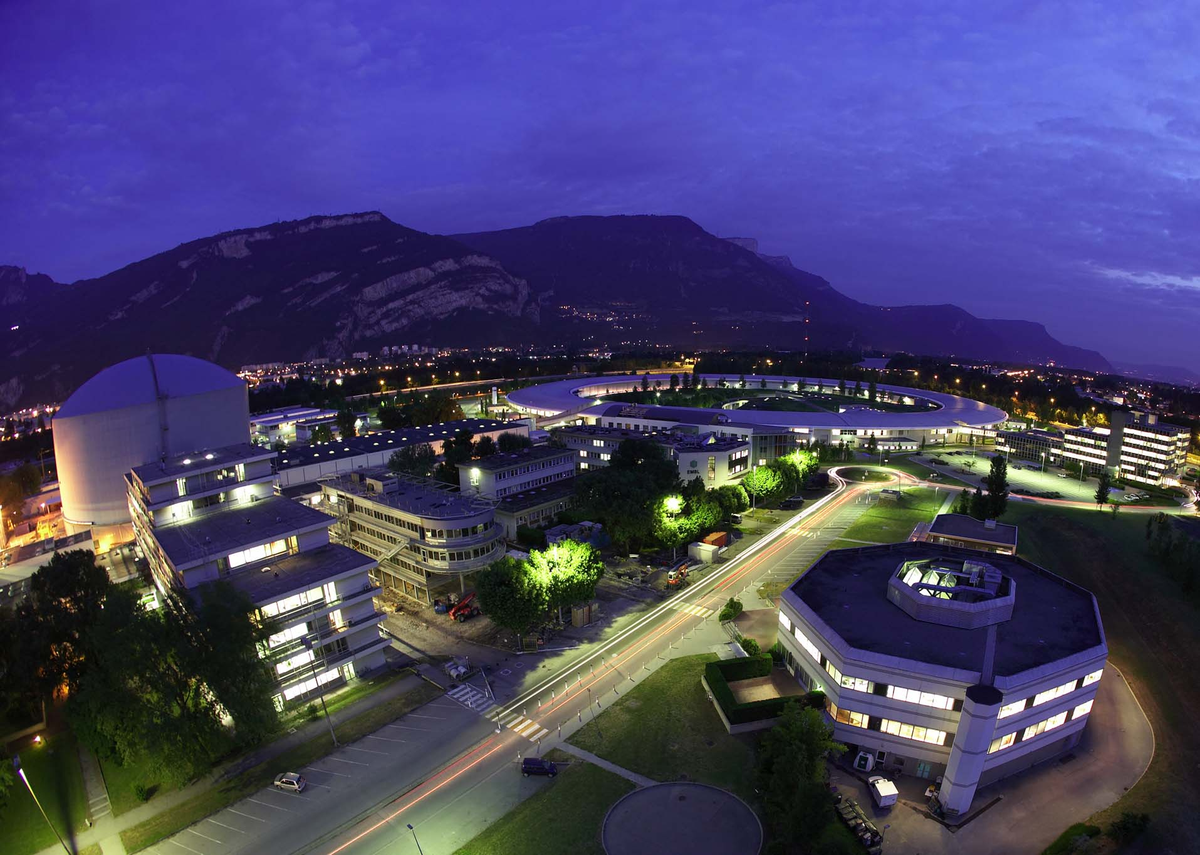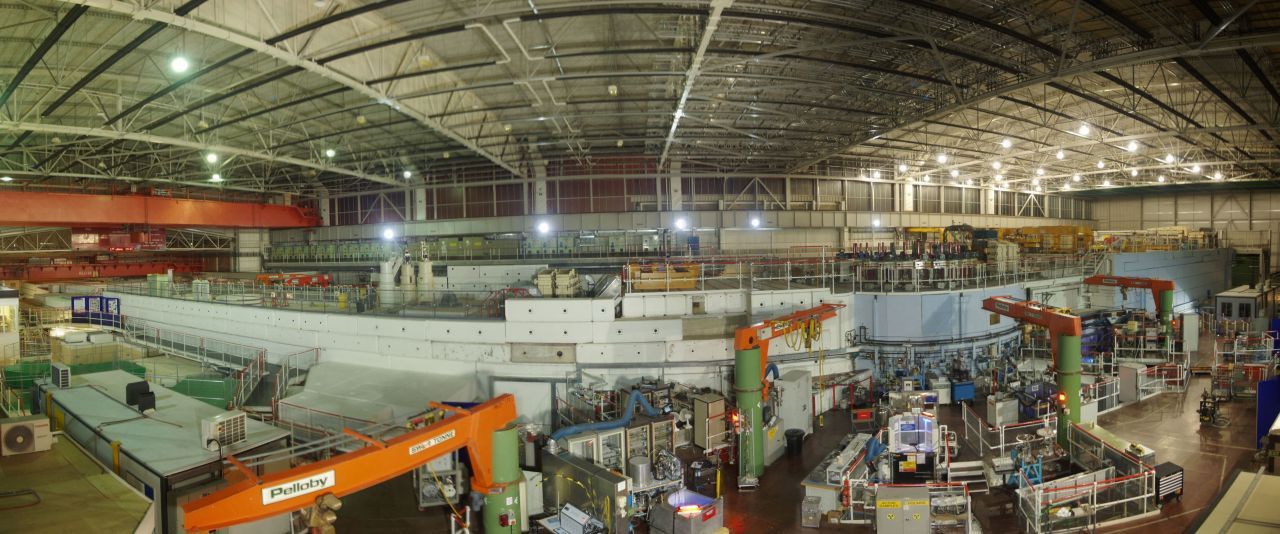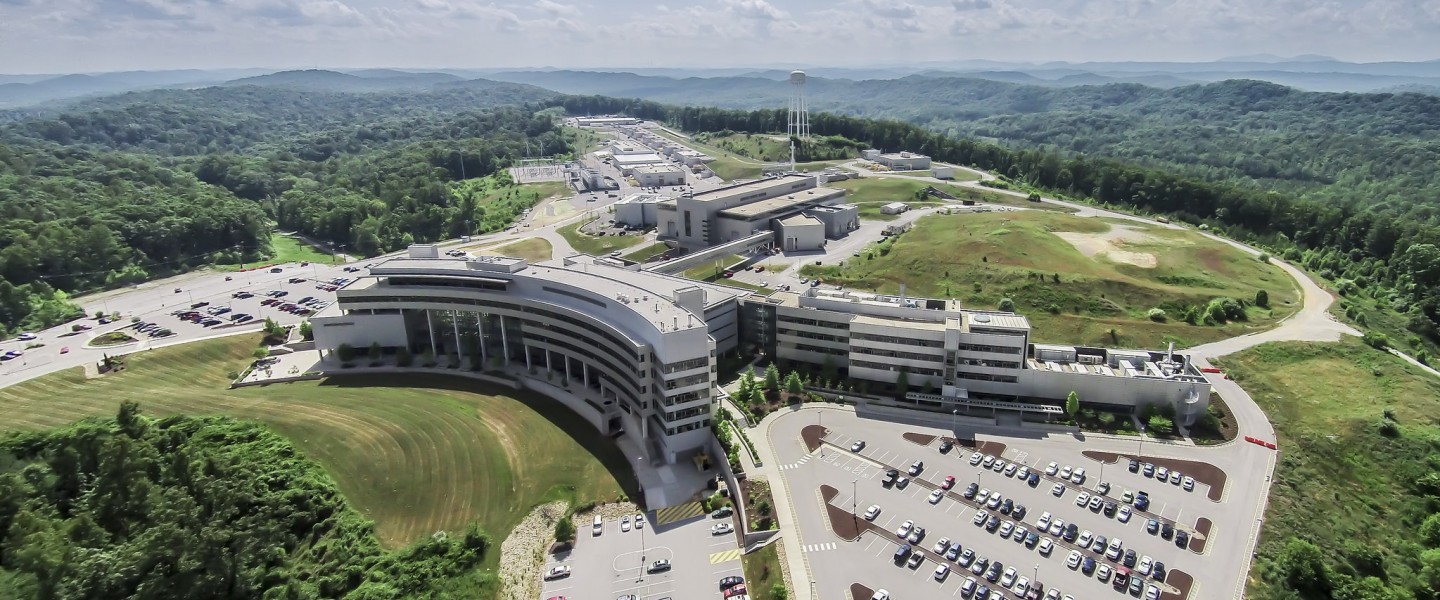Neutron Scattering
![Neutron scattering spectra in the quantum paramagnet (left) and Tomonaga-Luttinger Spin Liquid (right) phases of the quantum spin ladder material DIMPY [ Schmidiger et al, Phys. Rev. Lett. 111, 107202 (2013)].](/neutron-scattering/_jcr_content/par/fullwidthimage_800309898/image.imageformat.930.1923691783.png)
Our main experimental tool in studying quantum magnetic materials is neutron scattering. This technique directly and quantitatively measures spin correlations in both space and time. This, in turn, provides detailed information on the magnetic ground state of the system and on the magnetic excitations.
Sufficiently intense neutron beams can't be produced in the lab. Instead we perform our experiments at dedicated large-scale facilities such as reactors and accelerator-based sources. This is still "small physics" though: we are not involved in the "nuclear" business of producing the neutrons. We come to such facilities with our samples, mount them on the appropriate instrument, open the beam shutter and use the incoming neutrons to take scattering data. The experiment itself typically lasts a few days. At the facilities we are assisted by local scientists who may not be experts in our physics, but know the workings of the corresponding spectrometer in all detail. The "real" experiment, however, starts when we come back to ETH and start analyzing the data.
Neutron measurements take careful planning many months in advance and a precise disciplined execution at the instrument. The data analysis may take many weeks or months. The entire research cycle may span over a year or even a couple of years. For this reason, neutron scattering data are rarely the first to be published for a new exciting quantum magnetic material. But in the end we get momentum- and frequency- resolved data that are simply impossible to obtain with any other techniques. These measurements are so comprehensive and informative, that neutron scattering is often is the last experiment that needs to be carried out.
Swiss Intense Spallation Source SINQ (at Paul Scherrer Institut)

The facility external pageSINQcall_made is closest to ETH is only 35 km away from the Hönngerberg campus. At the turn of the century it became the first non-reactor source that produced a continuous beam. SINQ also pioneered the use "supermirror" neutron guides as the baseline design ingredient for all its scattering instruments. The guide system has very recently been upgraded to dramatically increase the useful neutron flux at the sample position. One of the old but excellent instruments that we regularly use at PSI is the external pageTASPcall_made 3-axis spectrometer.
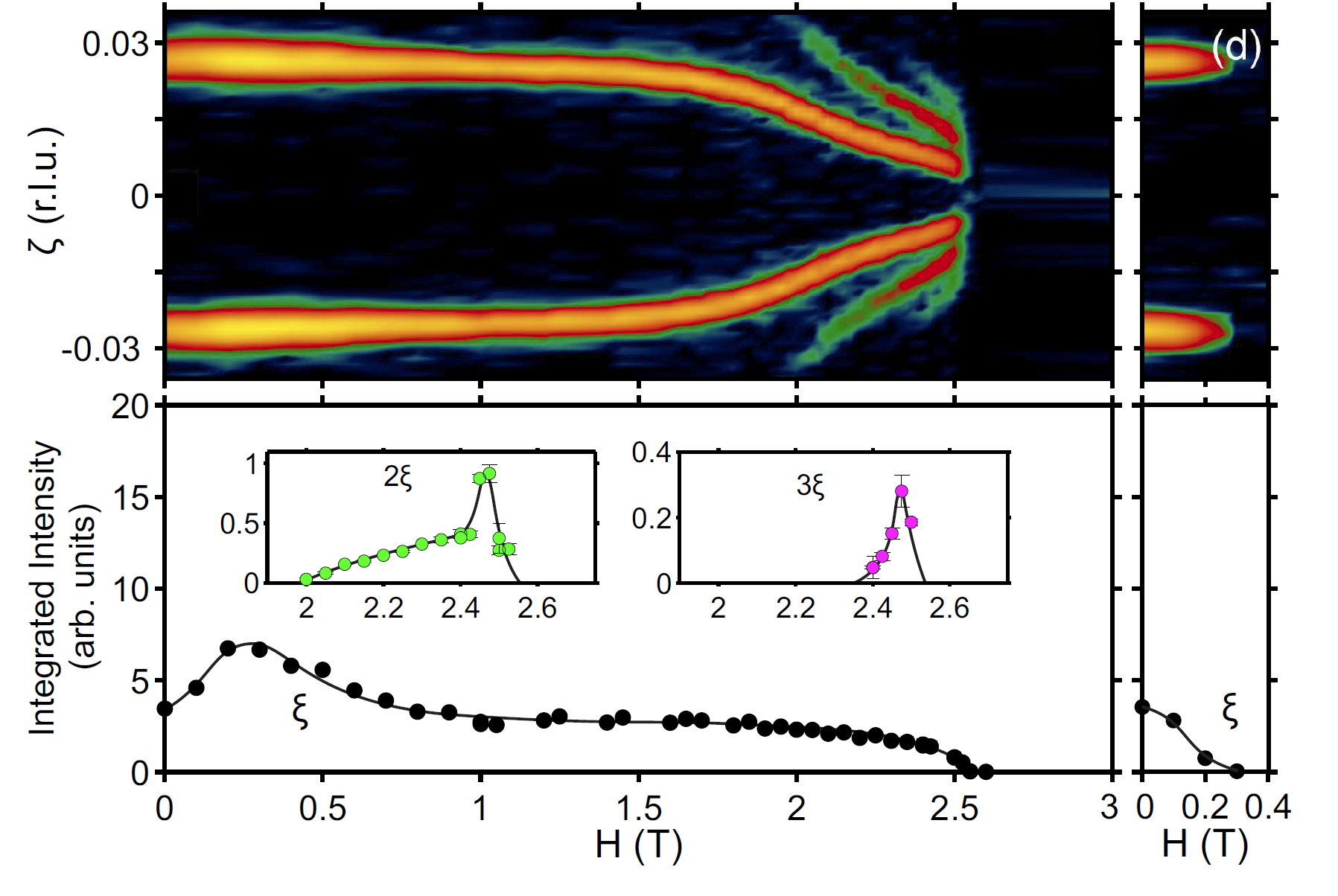
Magnetic field dependence of Bragg scattering from a soliton-lattice incommensurate phase in Ba2CuGe2O7 as measured on the TASP instrument. For more details see: external pageS. Mühlbauer, S. Gvasaliya, E. Ressouche, E. Pomjakushina, and A. Zheludev, Phys. Rev. B 86, 024417 (2012)call_made.
Institut Laue-Langevin, Grenoble, France
Perhaps the most famous neutron source of all is the research reactor at external pageInstitut Laue-Langevincall_made (ILL). Many if not most technological advances in neutron instrumentation originated here. It is a vast international collaboration that has been going on for many decades. ILL has one of the largest parks of instruments that are being continuously upgraded. Our group is a frequent user of the external pageIN5call_made time of flight spectrometer, external pageIN12call_made and external pageIN22call_made 3-axis spectrometers and the rather unique external pageD23call_made lifting-counter diffractometer.
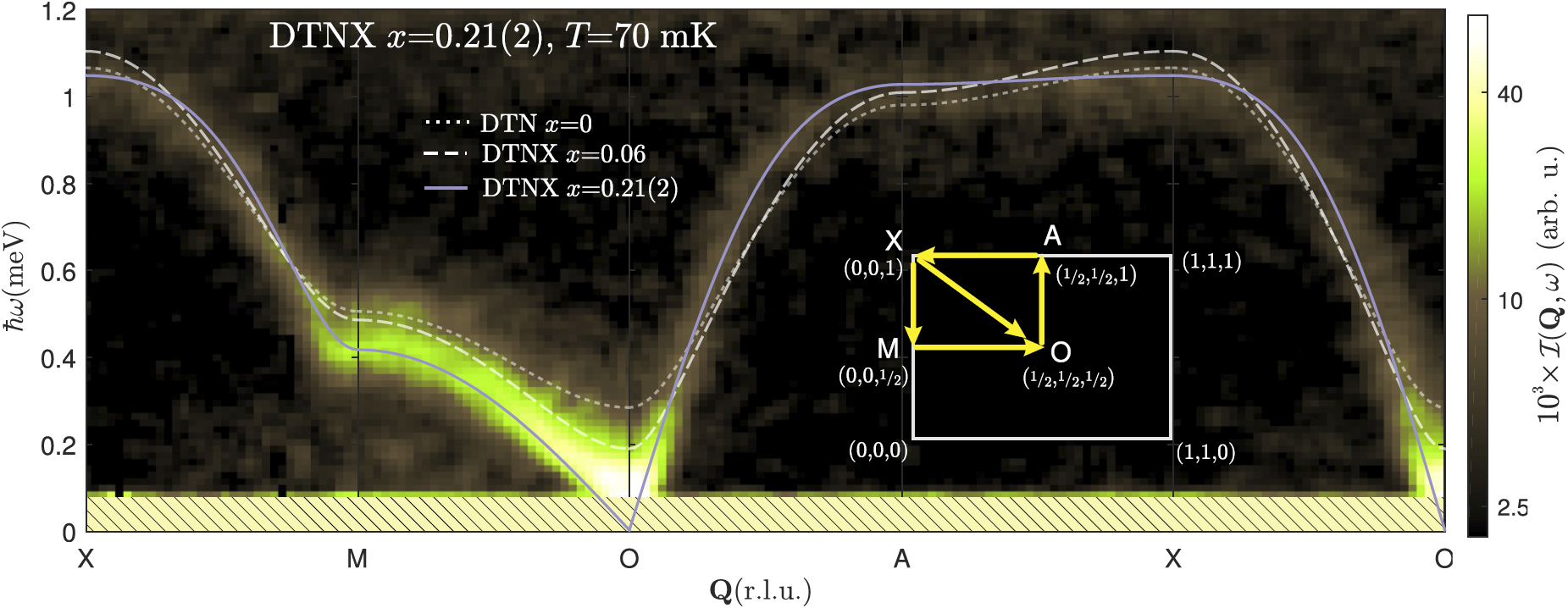
Data from IN5: dispersion of magnon excitations measured in a prototypical XY antiferromagnet near a chemical-composition induced quantum phase transition from a magnetically ordered to a quantum-disordered state. For details see external pageA. Mannig, K. Yu. Povarov, J. Ollivier, and A. Zheludev, Phys. Rev. B 98, 214419 (2018)call_made.
ISIS neutron source at Rutherford Appleton Laboratory, Oxfordshire, UK
external pageISIScall_made is UK's national pulsed neutron source. Although the time-average neutron flux is not very high, the peak flux in the extremely short pulses is enormous. That type of source is best suited for time-of-flight spectroscopy and has some of the best instruments of that type in the world. We use several machines at ISIS regularly, including external pageLETcall_made and external pageMAPScall_made.
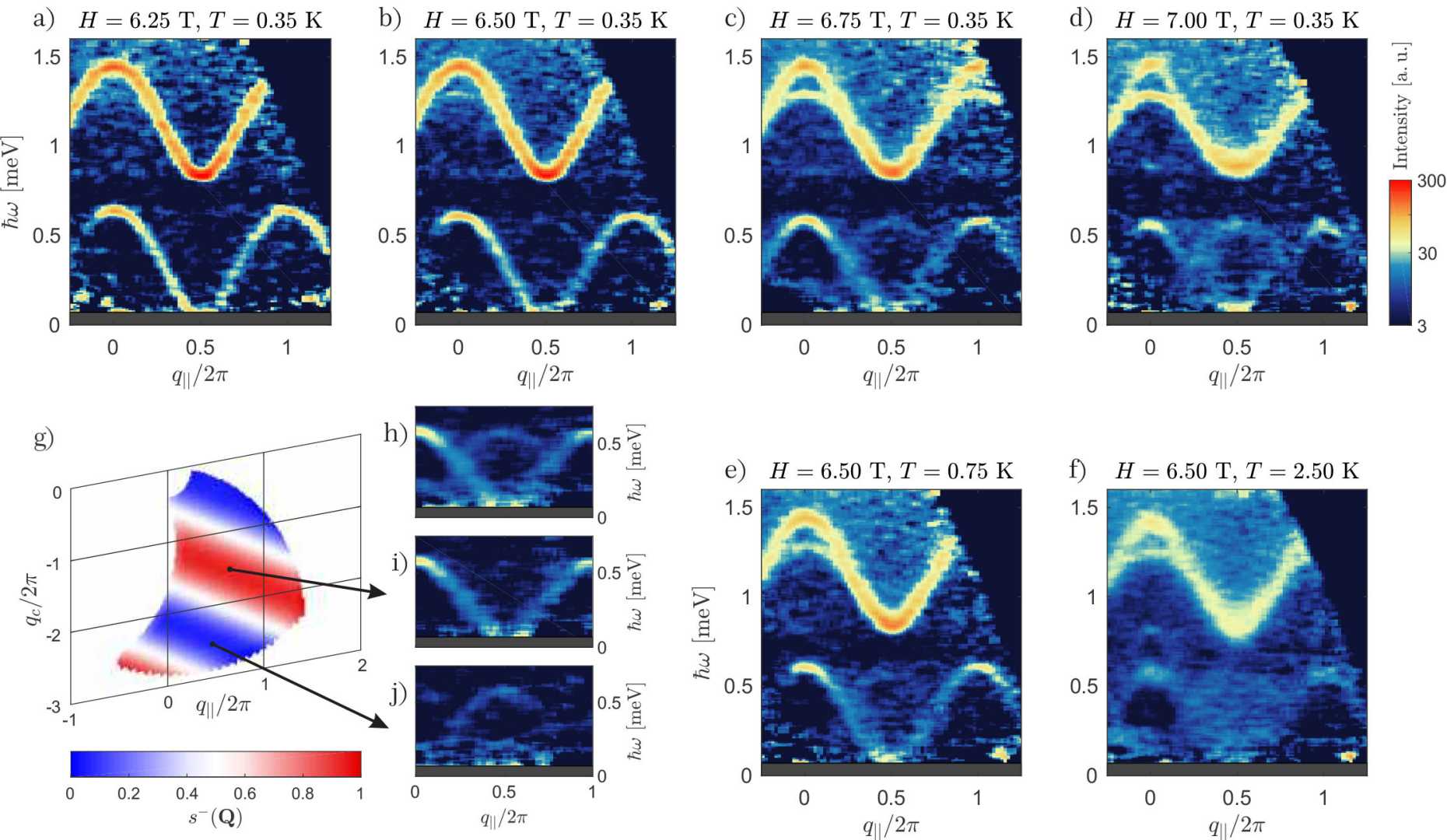
Inelastic neutron scattering spectra as measured in the spin ladder compound BPCB near a magnetic field induced d=1 z=2 "superuniversal" quantum critical point. The experiment was performed at the LET spectrometer. See external pageD. Blosser, V. K. Bhartiya, D. J. Voneshen, and A. Zheludev, Phys. Rev. Lett. 121, 247201 (2018)call_made for more details.
NIST Center for Neutron Research, Maryland, USA
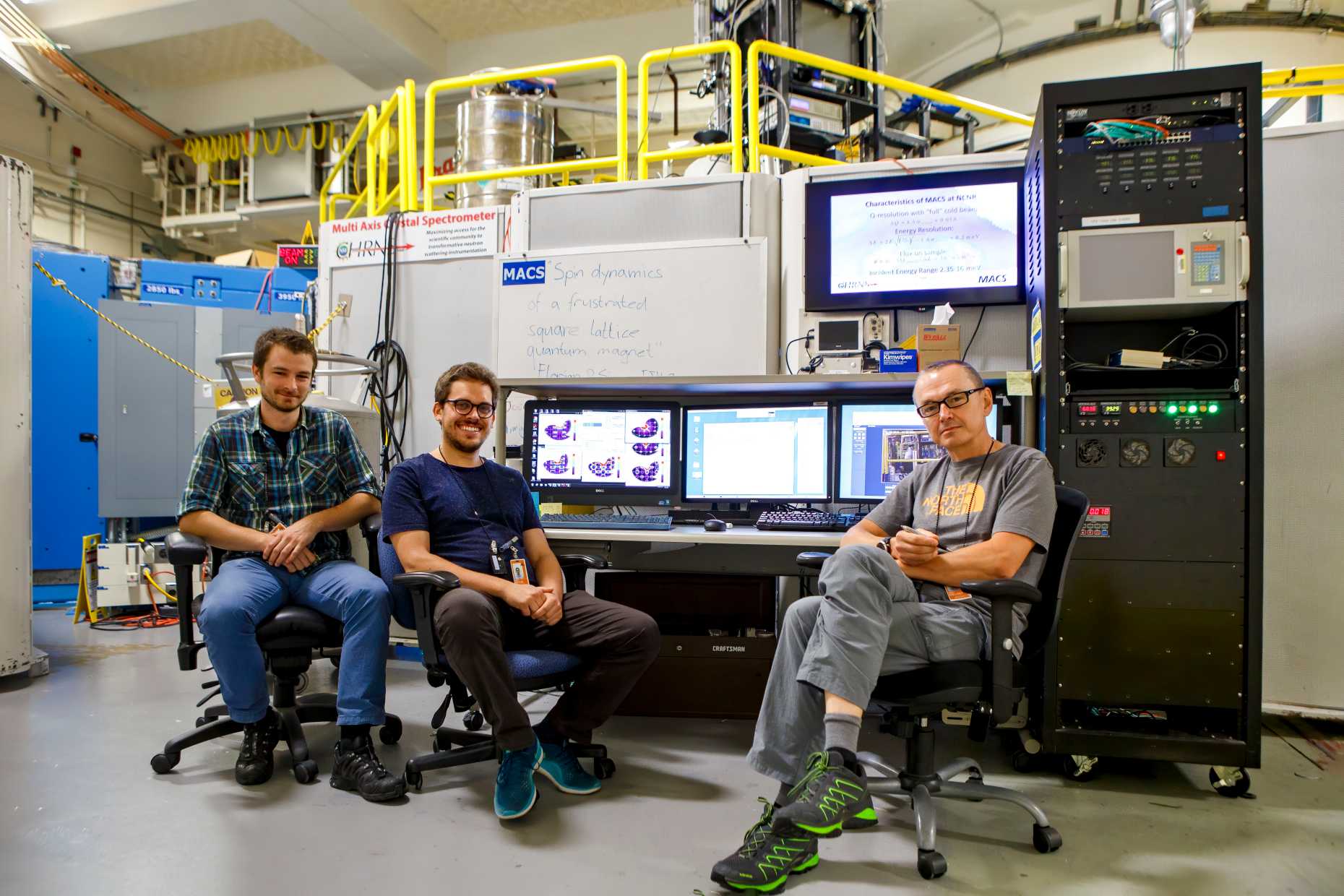
The National Institute of Standards and Technology (NIST) Center for Neutron Research is of the leading reactor facilities in the US, particularly when it comes to cold neutrons. It is home to several state of the art instruments ideally suited for our type of problems. Our favorite is The Multi Axis Crystal Spectrometer (external pageMACScall_made), which is a third-generation cold neutron 3-axis spectrometer. Above: Florian Landolt, Simon Bettler and AZ during an experiment on MACS in 2018.
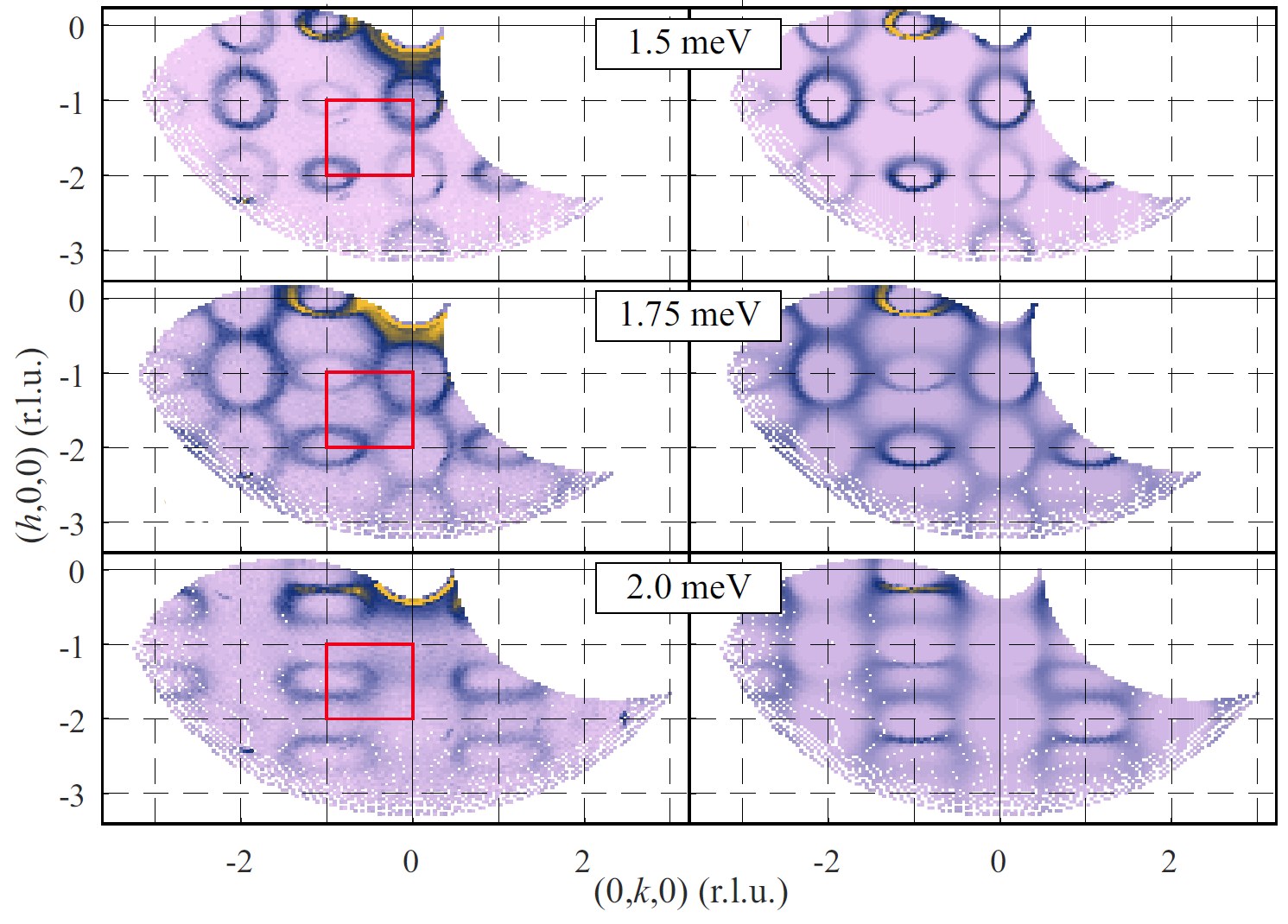
The MACS spectrometer is particularly well suited for measuring constant-energy slices of the excitation spectrum. Here is a comparison between mesured (left) and calculated (right) spin wave excitations in the frustrated ferro-antiferromagnet Pb2VO(PO4)2. Read the full story in external pageS. Bettler, F. Landolt, Ö. M. Aksoy, Z. Yan, S. Gvasaliya, Y. Qiu, E. Ressouche, K. Beauvois, S. Raymond, A. N. Ponomaryov, S. A. Zvyagin, and A. Zheludev, Phys. Rev. B 99, 184437 (2019)call_made.
Spallation Neutron Source (SNS) and High Flux Isotope Reactor (HFIR) at Oak Ridge, Tenneessee, USA
Oak ridge National Laboratory is home two complementary neutron sources. The external pageSpallation Neutron Sourcecall_made is at present the most intense accelerator-based neutron source in the world. It provides a pulsed beam optimized for time-of-flight measurement techniques, such as implemented on the Cold Neutron Chopper Spectrometer external pageCNCScall_made. The external pageHigh Flux Isotope Reactorcall_made provides an intense continuous neutron flux, useful in 3-axis type instruments such as external pageCTAXcall_made.

Sperctra in three Cs1-xRbxFeCl3 samples measured in a single experiment on the CNCS instrument. The x=0 compound has a quantum disordered non-magnetic ground state, the Rb-system has conventional long-range helimagnetic order, and the x=0.3 material is right at the quantum critical point that separates these phases. For more information see external pageS. Hayashida, L. Stoppel, Z. Yan, S. Gvasaliya, A. Podlesnyak, and A. Zheludev Phys. Rev. B 99, 224420 (2019)call_made.

